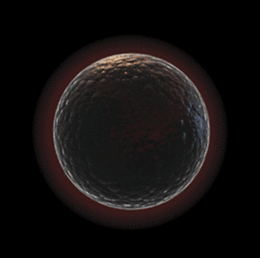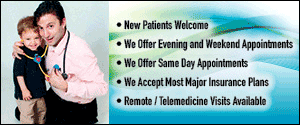
Families across the country are resorting to traveling abroad for stem cell therapies for their children. But is it pioneering medicine, or simply a pipe dream?
Cerebral palsy, muscular dystrophy and blindness: These are three very different life-altering diagnoses for anyone to grasp, let alone when the words they’re hearing from the doctor are not about themselves but about their own child.
Yet there’s one thing they have in common.
These three conditions, along with a slew of others, are attracting thousands of people worldwide to biotechnology firms in Asia, the Caribbean and Europe that are offering supposed pioneering stem cell treatment options for issues that until now were nothing other than irreversible.
But there’s a question that leaves many parents frustrated: How is it that these firms are able to provide these options when stem cell research for just a small amount of disorders remains in the clinical trial phase in the United States? On the other hand, the same query leaves even more doctors and researchers alarmed.
That’s because to them, these facilities are little more than charlatans of health care, promoting unproven treatments and latching onto the vulnerability of those desperate for options.
But to many parents, what’s been dubbed “stem cell tourism” is a sliver of hope worth holding onto.
Searching for answers
For Nicole and Doug Dillon of Maple Shade, there was no question what they would do when they were told in 2010 their 2-month-old son, Dougie, had a condition known as optic nerve hyploplasia (ONH). With ONH, the optic nerve—which transmits visual signals to the brain—is underdeveloped. The extent can vary, from complete blindness to a range of light perception, but there is no known cure.
Dougie, legally blind, was at the lower end of the scale. With optic nerves about 75 percent smaller than average in both eyes, he reacted to a flashlight from about a foot away max but could not track it, and could not see colors.
Within weeks of his birth, the parents noticed, between his eyes wandering and squinting, that something wasn’t right. It had been a typical pregnancy and he was an otherwise healthy boy, so it went ignored at first. But as more people pointed it out, the cause for concern grew. Then came the ONH diagnosis from both a local ophthalmologist and again at Children’s Hospital of Philadelphia (CHOP) where they went for a second opinion.
The young parents had to quickly reset their expectations.
“When we found out, it was definitely really, really hard,” says Nicole Dillon. “You have this whole idea; you envision what’s going to happen. Then all of a sudden the whole slate is wiped clean.”
But one thing they weren’t willing to do was wait it out. Despite being told many children with ONH see natural progress by age 2—due to the fact that the brain is still making new connections—they came home from CHOP that night and began doing research.
The Dillons say they felt comfortable they had rooted through the scams and settled on what they found to be a reputable company—Beike Biotechnology in China.
Beike Biotech specializes in the research of adult stem cells—meaning they use cells from cord blood and bone marrow; not embryonic stem cells. Through partnerships with area hospitals, treatments are offered for conditions ranging from ataxia and cerebral palsy to brain injuries and diabetic foot disease. Success rates of up to 80 percent are claimed.
“There’s not much research you can do to ensure you’re not being scammed,” Nicole admits, adding no guarantees were ever made in their mostly email communication with the company 8,000 miles away. “But this company was the safest in our head.”
It was around Dougie’s first birthday that they decided to make the trip, but the estimated $35,000 price tag—which had to be entirely out of pocket—was also entirely out of reach.
That meant starting a nonprofit and months of fundraising, only to find out they would need more. A total of $45,000 was eventually collected from their generous community.
On July 28, 2012, at 22 months old, Dougie made the trip to ChengYang People’s Hospital in Qingdoa, China, going off no proof of effectiveness other than video testimonials.
Where faith meets science
Nicole Dillon says she understood people’s hesitation to accept what they were doing for her son. Local doctors reacted by either refusing to comment or warning her that it could be a scam and it was unsafe. She even received several letters during the fundraising campaign of people concerned the family was being taken for a ride. “My response to them was that I would do anything for my son,” she says simply.
There was a moment when they wondered if they made the right choice—following a 25-hour flight with a toddler and an introduction to an area of China with no hot water, odd smells, and signs all around their hospital warning people not to spit on the floor.
But as soon as the testing and treatment began, the parents say they felt at ease. The staff and doctors were pleasant. Meeting other families helped as well, and led them to change their mind about the type of treatment Dougie would receive. What was going to be eight IV injections became five combined with three spinal injections.
“You would have thought we were the ones having all the problems,” Nicole says, adding Dougie had to lay still for six hours straight while receiving the spinal injections, but she only had to tell him to lay back down five times during the three treatments. “He took it like a man.”
As husband Doug Dillon says, any doubts were erased by how quickly they saw change.
Within two treatments, they say he was reacting to light two feet away; by the end, it was three feet or more. “When the doctor stopped with the flashlight, Dougie would stop and reach out for it,” Nicole says, adding after only cruising along furniture back at home, he had the confidence to walk on his own down the hospital hallways.
Then there’s “photo evidence.” You could count on one hand how many photos there were of Dougie beforehand where Nicole just happened to catch his eyes at the right moment. But during the three-week hospital stay, she had nearly 10—proof, she says, that he could see the flash.
“I mean, it’s not hard to believe when nearly one week after having the first treatments, his eye movements were gone and he’s seeing further away and tracking objects,” his father says.
Now nearly 12 months after his treatment, Dougie sees about four feet away, scans the room when playing hide and seek, and recognizes all of his basic colors. His favorite thing to say, Nicole muses, is, “Do you see that?”
It’s a question she loves to answer. “Yes Dougie, I see that.”
Is medicine to thank?
Of course, the question of whether or not it was the stem cells that gave Dougie partial vision or the fact he could have generated the connections on his own is one that can’t definitively be answered, but there are varying opinions.
In the United States, there’s skepticism. There are currently clinical trials across the country investigating the effectiveness of stem cells in treating anything from severe joint pain to ALS. But beyond bone marrow transplants, which have been used for decades, there is no common approved use of stem cells for treatment of serious health issues.
“Clinical trials are clearly under way, but in this country, it has to work before it can be used,” says Dr. Michael Christman, president and CEO of the Coriell Institute for Medical Research in Camden, one of the country’s leading research facilities in human genetics, stem cells and biobanking. “That’s the reason for the ‘tourism’ aspect. They have to go out of the country because it’s not yet shown to work.”
As Christman explains, the use of stem cells in therapy is something that falls under FDA regulation. It’s considered a drug if the cells are taken out, purified, modified and put back. In fact, it’s for that reason the FDA recently shut down a clinic in Texas, Celltex Therapeutics, claiming the medical procedures they had been offering to MS patients and others were unregulated.
The FDA has a very high standard for whether or not it will approve something but basically, it has to meet two standards: that it’s safe and effective. Those are the two things Christman says these foreign institutions have yet to prove. And so he has strong words for them.
“Almost all of the places [people] are going to have yet to show any level of scientific or clinical rigor that their therapies work,” he says. “Essentially these are quacks that are preying on the hopes of desperate people.”
At the same time, he can’t blame the parents, he laments. “[Some of them are] on death’s door, so it’s a personal choice.”
What frustrates him is the amount of money they charge these people to receive unregulated treatment. He’s heard of parents forking out $15,000 in Costa Rica for autism treatment and $20,000 in China for spinal cord injury treatment.
There was even a case of a British doctor who was banned from medicine after treating MS patients with cow stem cells.
At Coriell, the stem cells they are currently researching are called induced pluripotent stem cells, meaning they are artificially derived from adult stem cells—making the use of embryonic cells obsolete. Dealing with stem cells is incredibly complicated because of their vulnerability, Christman explains. Since they quickly take form of whatever environment they’re subjected to, they could easily grow in inappropriate ways and lead to further problems such as cancer.
Hence the need for FDA approval, a stamp that usually takes several phases of clinical trials—about 10-15 years’ worth—for a drug company to receive. “Now you’re seeing companies having clinical trials with stem cell therapies. They certainly do hold a lot of promise and there’s every reason to go forward with thinking of the potential,” Christman says. “The bottom line is it’s in the early days of how safe and effective these therapies will be. In most cases, it hasn’t even been demonstrated to work with animals yet.”
The biggest risk in all of this, Christman says, is that the controversy will turn people off to the promise of stem cells.
He does acknowledge there are anecdotal cases of treatment working, such as the Dillons.
And if you ask Nicole Dillon, after all the time and effort they put into helping their son, she can only come up with one conclusion.
“I put it all toward stem cells,” she says. “In the back of my head, I’m confident all that work paid off.”
That’s why she’d recommend in a heartbeat for other parents in the same situation, as long as they can make it work, to do it. “I just want him to be able to do whatever he wants to do to the best of his ability. I’m the same as any other mom. I would take him back to China 1,000 times until he has X-ray vision if I could, just as long as he’s happy.”
In other words, she can’t put a price tag on hope.
“I would do anything for my son,” she says. “If that means spending $45,000 and it going down the drain, well then I spent $45,000 and can say I tried everything to help my kid.”
Published (and copyrighted) in South Jersey Magazine, Volume 10, Issue 3 (June, 2013).
For more info on South Jersey Magazine, click here.
To subscribe to South Jersey Magazine, click here.
To advertise in South Jersey Magazine, click here.












